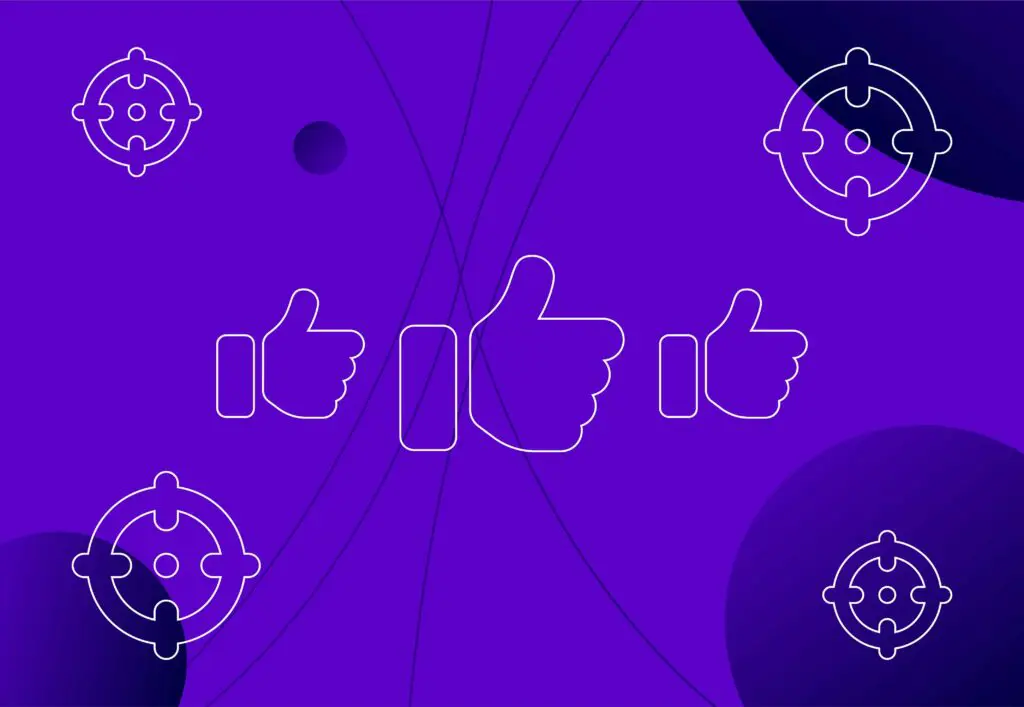
Five game-changing Facebook ad targeting strategies

Do you want to get your Facebook ads in front of the right people?
This article explores 5 of the best Facebook targeting strategies and explains how you can get the most from your ads. Facebook advertising is a brilliant way to increase brand awareness and boost sales. The success of your ads is highly impacted by who sees them. Luckily, Facebook offers a range of powerful targeting strategies to help you boost conversions from your ads.
Ready to learn five powerful Facebook ad targeting strategies and how you can utilise them in your paid social strategy? Let’s get started.
Increase conversions and reach new audiences with these five strategies
1. Explore Facebook user’s ‘purchasing behaviour’

What does Facebook know about active user’s habits and behaviour? A better question to ask is, what doesn’t Facebook know about its users? If you are having a baby, taking medication, or watching a new TV series, Facebook probably already knows.
In 2013 Facebook partnered with multiple data brokers. Acxiom, one of the partners, reported they had data on around half a billion active users. Therefore, it is no surprise Facebook has all the important user information needed for advertisers to utilise for their targeting.
You can use the vast amount of data to segment your target audience by thousands of ‘purchasing behaviours’. For example, if you sell clothes, you can select the clothing purchasing behaviour option. From this, a range of sub-categories will appear such as children’s, men’s, women’s, etc. Within each of these subcategories, more options are provided, allowing you to be super specific with your targeting. Facebook also gives you information on how many user profiles you can target with each sub-category.
You can find the users most likely to purchase your product and then target them with your ads and boost your sales!
2. Target users who have experienced specific ‘life events’

The relevancy of ads is a vital component of any successful campaign. If people relate and resonate with your ad, they are more likely to engage and purchase from you. So, what makes great content? Content that speaks directly to the user. We target users based on their ‘life events’.
For example, if you sell wedding cakes, you want to target people who are engaged and getting married soon. Similarly, if you sell home furnishings, you might want to target people who have just moved into a new home.
Facebook offers almost every ‘life event’ option you can think of and even offers specific intervals of time after an event, so you can be even more specific with your targeting. For example, if you sell jewellery, you might want to target users who are celebrating an anniversary. Therefore, you can target users who got married 1 year ago (fingers crossed that the marriage lasted long enough for a 1st anniversary!)
3. Increase conversions by targeting ‘custom audiences’

Facebook’s ‘custom audiences’ feature allows you to include or exclude existing contacts when targeting ads based on your goal with the campaign. For example, if you are offering a free trial to new customers, you don’t want to put this ad in front of existing customers so you can exclude them from this campaign.
People will often engage, view, or show interest in your brand without completing a conversion; a person could view your site, scroll through your products, or even have a product saved in their basket but never actually purchase it. ‘Custom audiences’ allows you to retarget those specific individuals as a way to boost conversions.
Custom audiences can help you target existing customers as well as new customers. It’s a win-win.
4. Reach new audiences by building a ‘lookalike audience’

Using ‘lookalike audiences’ is a great targeting strategy for expanding reach and increasing your audience pool. It allows you to target specific individuals who share behaviours, habits, and interests with your existing customers. It is based on the premise that if your current customers purchase your product, it is likely people similar to them will too.
If you don’t have a huge existing customer base yet, you don’t need to worry. You can use a tracking pixel to create a custom audience and mirror it, so nothing is stopping you from giving this a try.
5. Be precise with ‘detailed targeting’

Facebook allows you to layer targeting options on top of each other, so you can create a very specific audience to target. You can get so granular with your targeting that your ad could solely target one person. Of course, this wouldn’t generate many conversions or sales but it just goes to show how detailed Facebook’s targeting is.
You can layer behavioural targeting options on top of demographic options and then on top of that, you can add location targeting options. For example, if you were a Manchester-based furniture company advertising a discount for senior citizens, you could target people aged 60+, who have bought a house in the last year in Manchester.
You can speak directly to the needs of specific users and increase conversions.
Which Facebook ad targeting strategy do you want to try first?
If you feel you need support with your Facebook Ad Targeting strategy, our paid social team here at Embryo can help you take your ads to the next level.